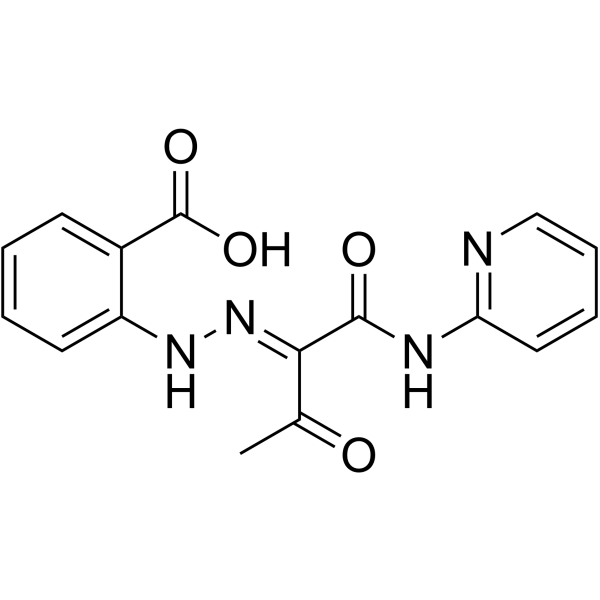| In Vitro |
sRANKL-IN-3 (Compound S3-15) selectively binds sRANKL. sRANKL-IN-3 has a high binding affinity to sRANKL (KD=5.78 μM) and is significantly stronger than binary-RANKL (KD=124 μM)[1]. sRANKL-IN-3 (0.01-100 μM; 5 d; osteoclast) inhibits osteoclastogenesis in a dose-dependent manner[1]. sRANKL-IN-3 (5 μM; 24 h; osteoclast) suppresses RANKL mediated NF-κB and MAPK signaling pathway[1]. sRANKL-IN-3 (0.003-33 μM; 24 h; osteoclast) induces mature osteoclasts apoptosis and attenuates bone resorption in a dose-dependent manner[1]. sRANKL-IN-3 (0.1-10 μM; 14 days) increases cell proliferation and mineralization in mouse embryonic mesenchymal stem cell line C3H10T1/2 or human primary osteoblasts cells with osteogenic differentiation medium[1]. Cell Viability Assay[1] Cell Line: Osteoclast Concentration: 0.01, 0.1, 1, 10, and 100 μM Incubation Time: 5 days Result: Inhibited osteoclastogenesis with an IC50 value of 0.19 μM. Apoptosis Analysis[1] Cell Line: Mature osteoclasts Concentration: 0.003, 0.01, 0.03, 0.1, 0.3, 1, 3 10 and 33 μM Incubation Time: 24 hours Result: Significantly increased apoptosis of mature osteoclasts with an EC50 of 0.55 μM. Apoptosis Analysis[1] Cell Line: C3H10T12 cells Concentration: 0.1,1 and 10 μM Incubation Time: 14 days Result: Increased cell proliferation and mineralization in mouse embryonic mesenchymal stem cell line Western Blot Analysis[1] Cell Line: Osteoclast Concentration: 5 μM Incubation Time: 24 hours Result: Reduced NF-κB and NFATC-luciferase expression and suppresses osteoclast markers (DC-stamp, Ctsk, MMP9, Tracp, Oscar, and Calcr) expression.
|
